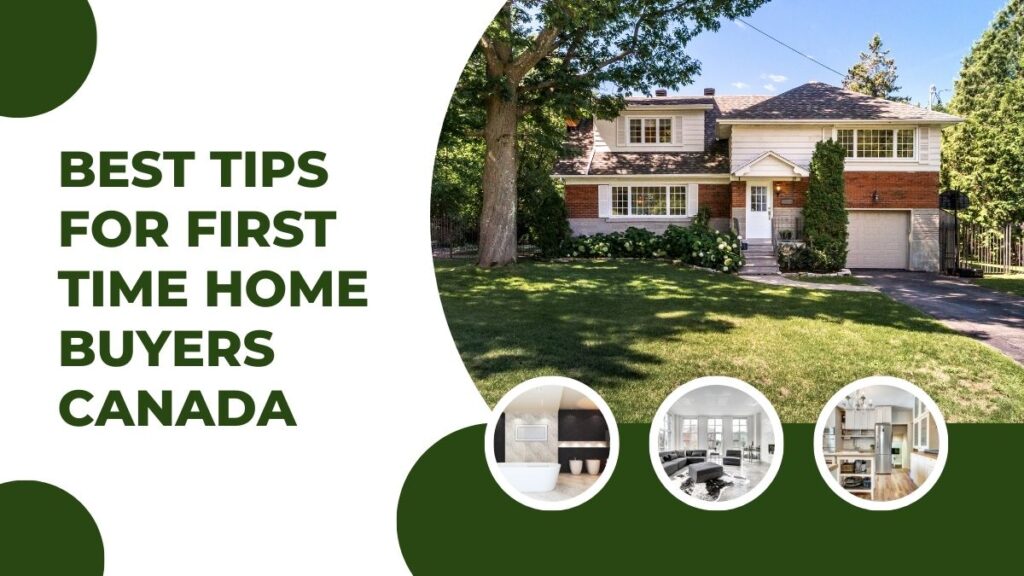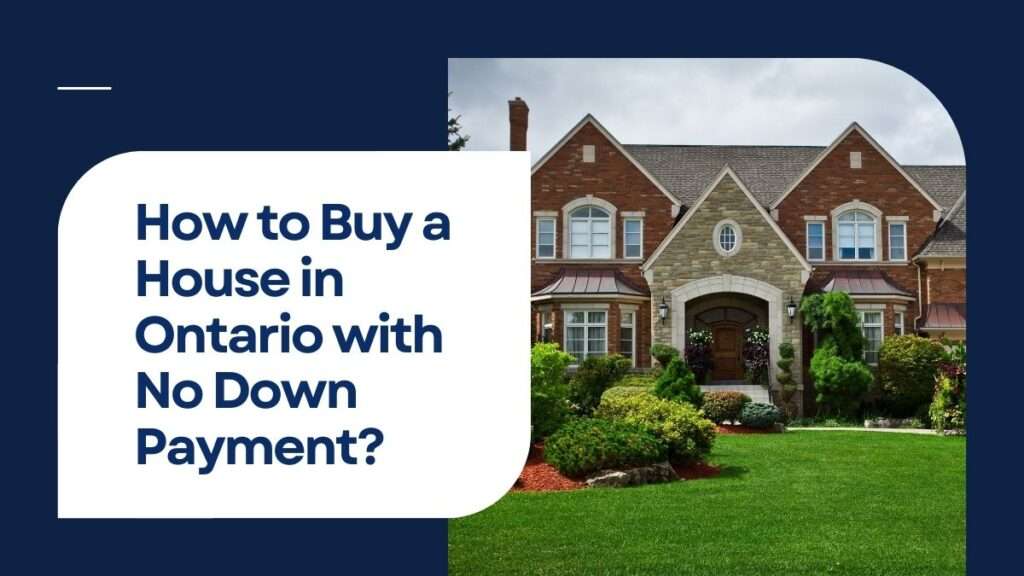Are you a first-time homebuyer in Canada? Check out these essential tips for first time home buyers Canada, secure the best mortgage rates, and make confident decisions for your first home purchase!
Buying your first home is one of the biggest milestones in life. Whether you’re dreaming of a cozy apartment in the city or a spacious house in the suburbs, this journey can feel both exciting and overwhelming.
The good news? With the right knowledge and planning, you can confidently navigate the process and make the best decision for your future.
In Ontario, the real estate market is especially competitive. In 2023, the average price of a home in Ontario was around $950,000, marking a significant shift from previous years. For first-time buyers, this can feel like a steep mountain to climb.
However, the good news is that with some smart strategies, you can avoid common pitfalls, save money, and secure a home you’ll love for years to come.
Before you dive into the real estate pool, here are some top tips to guide first-time home buyers in Ontario. These steps will help you navigate the complexities of the market, make informed decisions, and ultimately find your dream home.
Best Tips for First Time Home Buyers Canada
Looking to buy your first home in Canada? Discover the best tips for first-time homebuyers, including how alternative lenders for mortgages in Ontario can help you secure the right financing for your dream home!
Start with a Solid Budget
When it comes to purchasing your first home, the first thing you need to figure out is how much you can afford. It’s easy to fall in love with properties that are above your price range, but sticking to a budget will prevent any buyer’s remorse down the road.
How to do it? Start by calculating your monthly income and expenses. Use online calculators to determine how much you can comfortably afford to spend on your mortgage, property taxes, and other home-related expenses like utilities and insurance.
In general, experts recommend that your mortgage payment should not exceed 30% of your gross monthly income.
Additionally, you’ll need to consider the down payment. In Canada, first-time buyers typically need a down payment of at least 5% of the home’s price. However, if you’re aiming for a property above $500,000, the down payment will be higher.
Save for a Down Payment
The down payment is one of the most significant upfront costs of buying a home, and it’s essential to start saving early. The more you can put down upfront, the less you’ll have to borrow, which means lower monthly mortgage payments and less interest paid over the life of the loan.
If you’re eligible, don’t forget about the First-Time Home Buyer Incentive and the Home Buyers’ Plan (HBP), both of which can help reduce the financial strain. The HBP, for instance, allows you to withdraw up to $35,000 from your RRSP to put toward your down payment, without incurring taxes. But remember, this needs to be repaid over the next 15 years.
Get Pre-Approved for a Mortgage
A pre-approval is a letter from a lender stating how much money they’re willing to lend you based on your current financial situation. This is a crucial step in the home-buying process, as it gives you a clear idea of your budget and shows sellers that you’re a serious buyer.
During the pre-approval process, lenders will assess your credit score, income, and debt levels to determine the amount you’re eligible to borrow. Being pre-approved for a mortgage gives you an edge over other buyers in a competitive market and will make your offer more attractive to sellers.
Understand Your Credit Score
Your credit score is one of the primary factors that lenders use to assess your eligibility for a mortgage and the interest rate you’ll be offered. A higher credit score means you’re more likely to get approved for a mortgage and may qualify for lower interest rates, which can save you thousands over the life of your loan.
In Canada, credit scores typically range from 300 to 900. A score of 700 or above is considered good, while anything below 600 may be problematic when it comes to securing a mortgage.
If your score isn’t where you’d like it to be, focus on improving it before you apply for a mortgage. Paying down outstanding debts, avoiding late payments, and ensuring your credit report is error-free are all steps that can boost your score.
Research the Market
Once you’ve got your finances in order, it’s time to start thinking about where you want to buy. Canada’s real estate market can vary significantly by province and city, so it’s essential to research your chosen area thoroughly.
Things to consider include:
Make sure to explore different neighborhoods and get a feel for what each one offers. You can also check online real estate listings or work with a local agent who can guide you to the best options in your price range.
Work with a Real Estate Agent
While it’s possible to buy a home without an agent, it’s highly recommended for first-time buyers. Real estate agents are experts in the market and can help you find properties that meet your needs, negotiate a fair price, and navigate the complex paperwork involved in a home purchase.
An agent can also give you insider knowledge on neighborhoods and upcoming developments, which can make a huge difference in your long-term investment. Best of all, in most cases, the seller pays the agent’s commission, so it’s essentially a free service for buyers.
Don’t Forget About Closing Costs
While you may be focused on the price of the home itself, don’t forget to budget for closing costs. These can range from 1.5% to 4% of the home’s purchase price and include fees for things like home inspections, title insurance, legal services, and land transfer taxes.
In some provinces, land transfer taxes can be significant, so it’s crucial to factor this into your budget before you start shopping. In Ontario, for example, the land transfer tax for a $500,000 property could be as much as $8,475.
Get a Home Inspection
A home inspection is an essential step in the buying process. It’s your chance to have a professional examine the property for any hidden problems that might not be immediately apparent. Issues like foundation cracks, mold, or outdated electrical systems can cost you big bucks to repair after you move in.
A good home inspector will give you a thorough report on the condition of the property, and if there are any major issues, you can either ask the seller to fix them or negotiate a lower price.
Consider Future Growth
When buying your first home, it’s essential to think long-term. While you might be looking for a home that suits your needs now, consider how your needs might change in the future. Whether it’s adding family members, working from home, or upgrading to a bigger space, you want to ensure that the home you buy will continue to serve you well for years.
Look for homes in areas with strong growth potential places where property values are likely to rise in the coming years. This will not only give you a better quality of life but also ensure that your investment grows over time.
Take Your Time
In the rush to own a home, many first-time buyers fall into the trap of rushing through the process. Don’t let the excitement cloud your judgment. Take your time to research, explore options, and make informed decisions. Remember, buying a home is a major financial commitment, and you don’t want to rush into something you’ll regret later.
Also, don’t be afraid to walk away from a property if something doesn’t feel right. There are always more homes on the market, and the right one will come along when the time is right.
Get Familiar with the Closing Process
Once you’ve found your dream home and had an offer accepted, it’s time to prepare for closing. The closing process involves signing a ton of paperwork, transferring the funds, and officially becoming the owner of the property.
Make sure you understand the closing timeline and any remaining tasks that need to be completed. Having a good lawyer or notary can help ensure that everything goes smoothly, so you’re not left scrambling at the last minute.
Conclusion: Your Journey to Homeownership Starts Now
Buying your first home is an exciting chapter in your life, but it can also feel like a maze if you don’t have the right guidance. By following these tips, staying organized, and doing your research, you’ll be well on your way to finding a home that meets your needs and fits within your budget. Remember, patience is key, and with the right preparation, your dream home will soon be a reality.
As the saying goes, “Home is where the heart is,” and with a little planning and persistence, that heart will find a place to settle and grow. Best of luck on your home-buying journey in Canada! And when you’re ready, Contact AJP Mortgage today to help make your homeownership dream come true.


